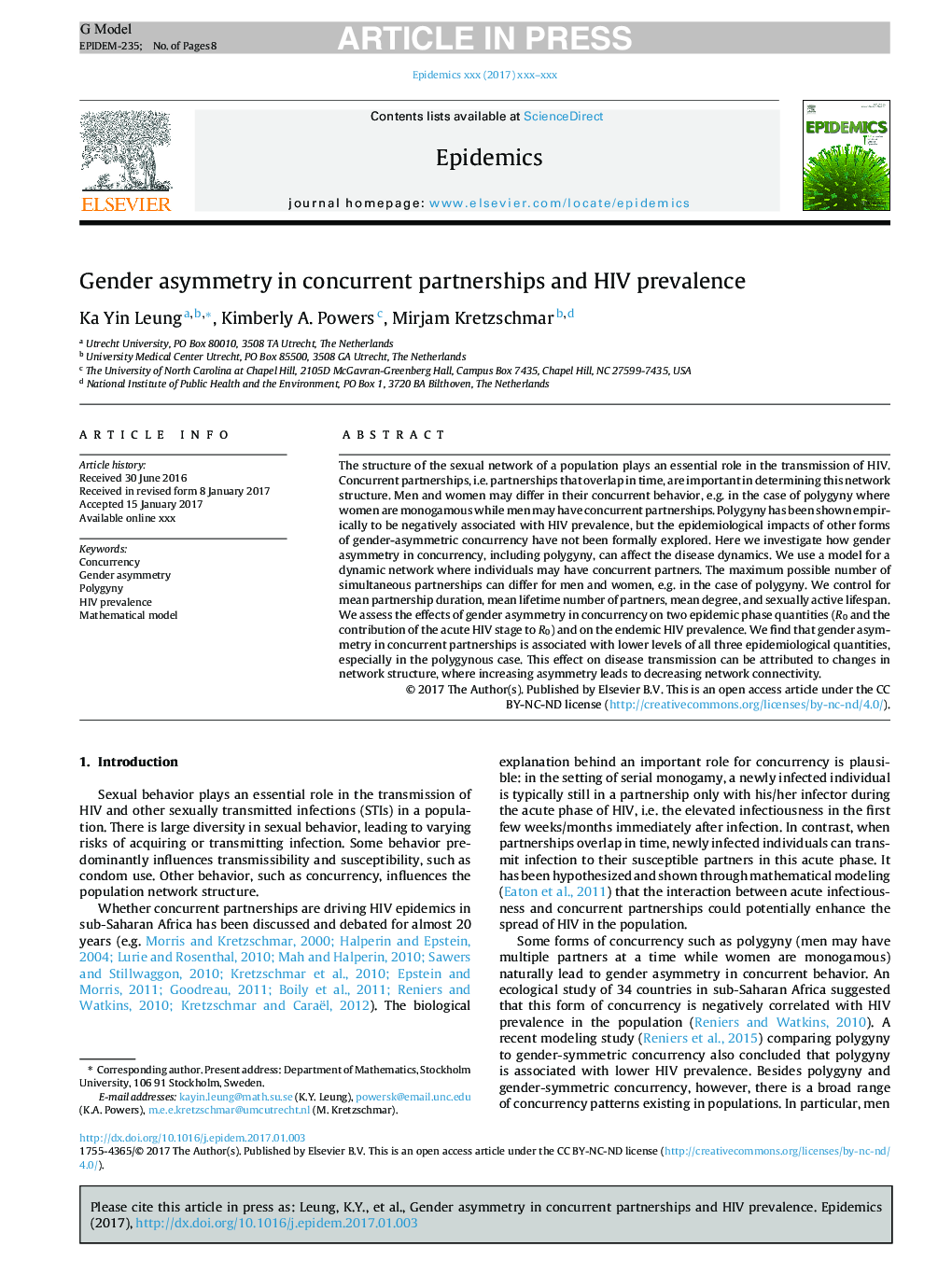| کد مقاله | کد نشریه | سال انتشار | مقاله انگلیسی | نسخه تمام متن |
|---|---|---|---|---|
| 5588947 | 1569428 | 2017 | 8 صفحه PDF | دانلود رایگان |
عنوان انگلیسی مقاله ISI
Gender asymmetry in concurrent partnerships and HIV prevalence
دانلود مقاله + سفارش ترجمه
دانلود مقاله ISI انگلیسی
رایگان برای ایرانیان
کلمات کلیدی
موضوعات مرتبط
علوم زیستی و بیوفناوری
علوم کشاورزی و بیولوژیک
بوم شناسی، تکامل، رفتار و سامانه شناسی
پیش نمایش صفحه اول مقاله

چکیده انگلیسی
The structure of the sexual network of a population plays an essential role in the transmission of HIV. Concurrent partnerships, i.e. partnerships that overlap in time, are important in determining this network structure. Men and women may differ in their concurrent behavior, e.g. in the case of polygyny where women are monogamous while men may have concurrent partnerships. Polygyny has been shown empirically to be negatively associated with HIV prevalence, but the epidemiological impacts of other forms of gender-asymmetric concurrency have not been formally explored. Here we investigate how gender asymmetry in concurrency, including polygyny, can affect the disease dynamics. We use a model for a dynamic network where individuals may have concurrent partners. The maximum possible number of simultaneous partnerships can differ for men and women, e.g. in the case of polygyny. We control for mean partnership duration, mean lifetime number of partners, mean degree, and sexually active lifespan. We assess the effects of gender asymmetry in concurrency on two epidemic phase quantities (R0 and the contribution of the acute HIV stage to R0) and on the endemic HIV prevalence. We find that gender asymmetry in concurrent partnerships is associated with lower levels of all three epidemiological quantities, especially in the polygynous case. This effect on disease transmission can be attributed to changes in network structure, where increasing asymmetry leads to decreasing network connectivity.
ناشر
Database: Elsevier - ScienceDirect (ساینس دایرکت)
Journal: Epidemics - Volume 19, June 2017, Pages 53-60
Journal: Epidemics - Volume 19, June 2017, Pages 53-60
نویسندگان
Ka Yin Leung, Kimberly A. Powers, Mirjam Kretzschmar,